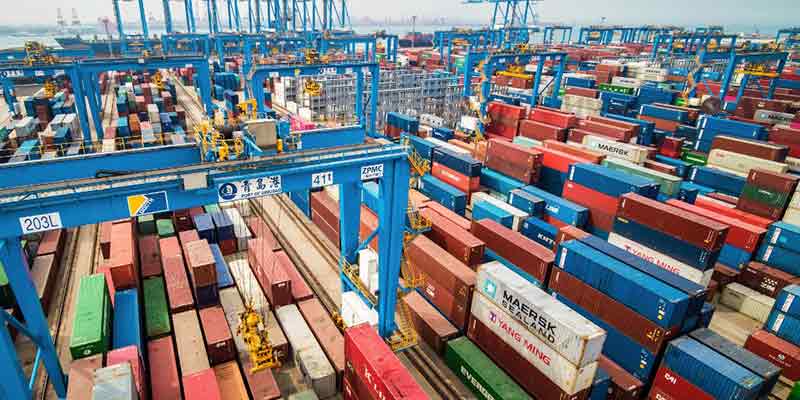- India
- Apr 01
Govt extends foreign trade policy
The government on March 31 extended the existing Foreign Trade Policy (FTP) 2015-20, including fiscal incentives for goods’ exports for one year till March 2021, amid the coronavirus outbreak and the national lockdown.
The commerce ministry said that in view of the “unprecedented current situation” arising out of the COVID-19 pandemic, it has decided to continue relief under various export promotion schemes by granting extension of the existing policy by another one year.
Foreign Trade Policy
The Foreign Trade Policy (FTP) 2015-20 was launched on April 1, 2015. A midterm review of FTP was held in December 2017 after the introduction of GST.
The FTP 2015-20 provides a framework for increasing exports of goods and services as well as generation of employment and increasing value addition in the country, in line with the Make in India, Digital India, Skill India, Startup India and ease of doing business initiatives.
The policy rationalised the earlier export promotion schemes and introduced two new schemes, namely Merchandise Exports from India Scheme (MEIS) for improving export of goods and Services Exports from India Scheme (SEIS) for increasing exports of services. Duty credit scrips issued under these schemes were made fully transferable.
The FTP describes the market and product strategy and measures required for trade promotion, infrastructure development and overall enhancement of the trade ecosystem.
It seeks to enable India to respond to the challenges of the external environment, keeping in step with a rapidly evolving international trading architecture and make trade a major contributor to the country’s economic growth and development.
Trade facilitation and enhancing the ease of doing business are the other major focus areas in FTP. One of the major objectives of FTP is paperless working in a 24x7 environment. The government has reduced the number of mandatory documents required for exports and imports to three, which is comparable with international benchmarks. A facility has been created to upload documents in exporter/importer profile and the exporters will not be required to submit documents repeatedly.
MEIS and SEIS
The government introduced the Service Exports from India Scheme (SEIS) replacing ‘Served from India Scheme’ under the FTP, 2009-15. Under SEIS, the service providers of notified services are incentivised in the form of duty credit scrips at the rate of 3 or 5 per cent on their net foreign exchange earnings. These SEIS scrips are transferable and can also be used for payment of a number of central duties/taxes including the basic customs duty.
An official statement issued on March 31 said the benefit under all the export promotion schemes (except SEIS) and other schemes, available as on date, will continue to be available for another 12 months. Decision on continuation of SEIS will be taken and notified subsequently, it said.
Apart from services, there is also a scheme for incentivising export of merchandise/goods. The Merchandise Exports from India Scheme (MEIS) rewards export of merchandise which are produced/manufactured in India through duty credit scrips.
MEIS benefits would be discontinued as rates will be fixed for products under the new scheme — Remission of Duties and Taxes on Export Product (RoDTEP).
EPCG scheme
The Export Promotion Capital Goods (EPCG) is an export promotion scheme under which an exporter can import a certain amount of capital goods at zero duty for upgrading technology related with exports. On the other hand, advance authorisation is issued to allow duty free import of inputs, which is physically incorporated in export products.
Niryat Bandhu
The objective of the Niryat Bandhu scheme is to reach out to the new and potential exporters and mentor them through orientation programmes, counselling sessions, individual facilitation, etc, for being able to get into international trade and boost exports from India. As part of the FTP, the department of commerce decided to galvanise the Niryat Bandhu scheme and reposition it to achieve the objectives of Skill India.
Decline in exports/imports
As per the FTP, the government aimed to increase India’s export of merchandise and services from $465.9 billion to approximately $900 billion by 2019-20.
Exports during April-February this fiscal dipped by 1.5 per cent to $292.91 billion. Imports during the period declined by 7.30 per cent to $436 billion, leaving a trade deficit of $143.12 billion.
According to government data, the trade deficit increased in 2017-18 and 2018-19 as compared to the previous years. Trade deficit depends upon relative fluctuations in the imports and exports of different commodities due to the global and domestic factors such as demand and supply in domestic and international markets, currency fluctuations, cost of credit and logistics costs.
The increasing trade deficit, in spite of positive growth of exports, is mainly due to higher imports particularly of the petroleum crude and products electronic goods, iron and steel, chemicals and related products, coal, fertilizers, machinery and non-ferrous metals, which contribute to more than 70 per cent share in total imports in 2018-19, the data said.
Manorama Yearbook app is now available on Google Play Store and iOS App Store

